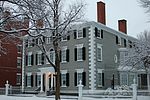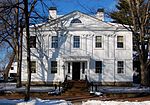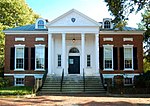North Shore Medical Center (Boston)
Salem Hospital, formerly known as North Shore Medical Center, is a Level III trauma center located in Salem, Massachusetts. A member of Mass General Brigham since 1996, it offers comprehensive medical and surgical services and includes emergency/trauma departments and a birthplace. It includes Salem Hospital and the Mass General Brigham Healthcare Center in Lynn, as well as outpatient care and urgent care. The Medical Staff includes nearly 800 affiliated physicians representing primary care, family practice and 50 additional sub-specialties. It is affiliated with Tufts University School of Medicine. Salem Hospital is a general medical and surgical hospital which had 199 licensed beds as of 2023, with plans to expand to 212 by early 2024. The hospital had 19,467 admissions in the latest year for which data are available. It performed 4,409 annual inpatient and 7,955 outpatient surgeries. Its emergency department had 90,149 visits for 2012. A helipad at Salem Hospital is a helicopter transportation hub, with multiple daily flights to hospitals all over Boston.
Excerpt from the Wikipedia article North Shore Medical Center (Boston) (License: CC BY-SA 3.0, Authors).North Shore Medical Center (Boston)
Highland Avenue, Salem
Geographical coordinates (GPS) Address Nearby Places Show on map
Geographical coordinates (GPS)
| Latitude | Longitude |
|---|---|
| N 42.511736 ° | E -70.906861 ° |
Address
Highland Avenue 79
01970 Salem
Massachusetts, United States
Open on Google Maps








